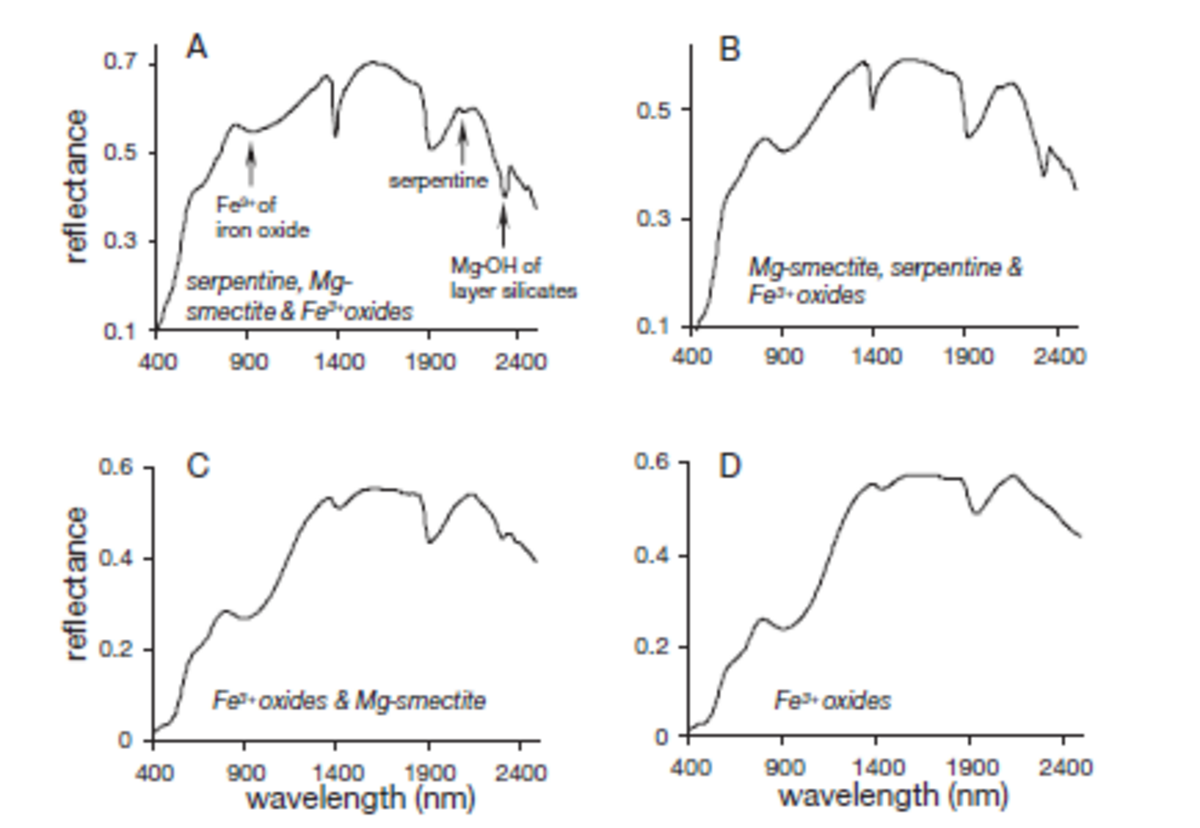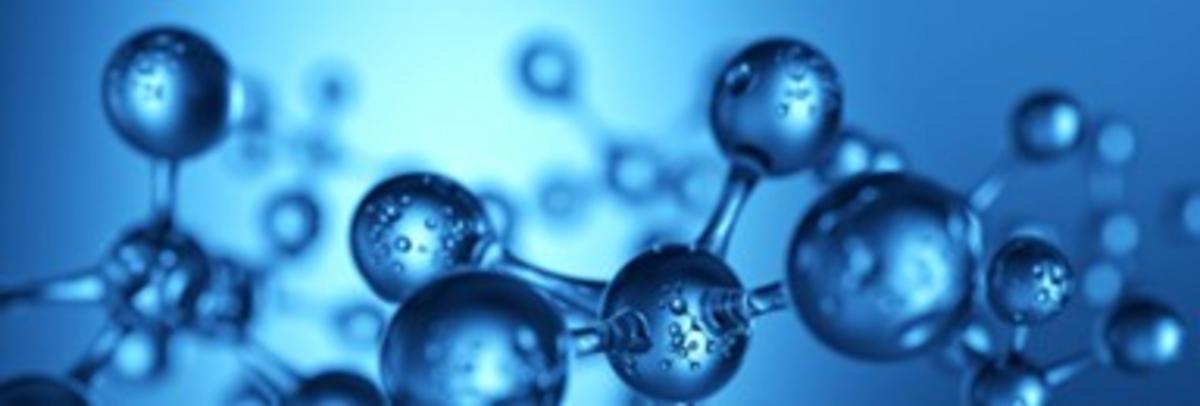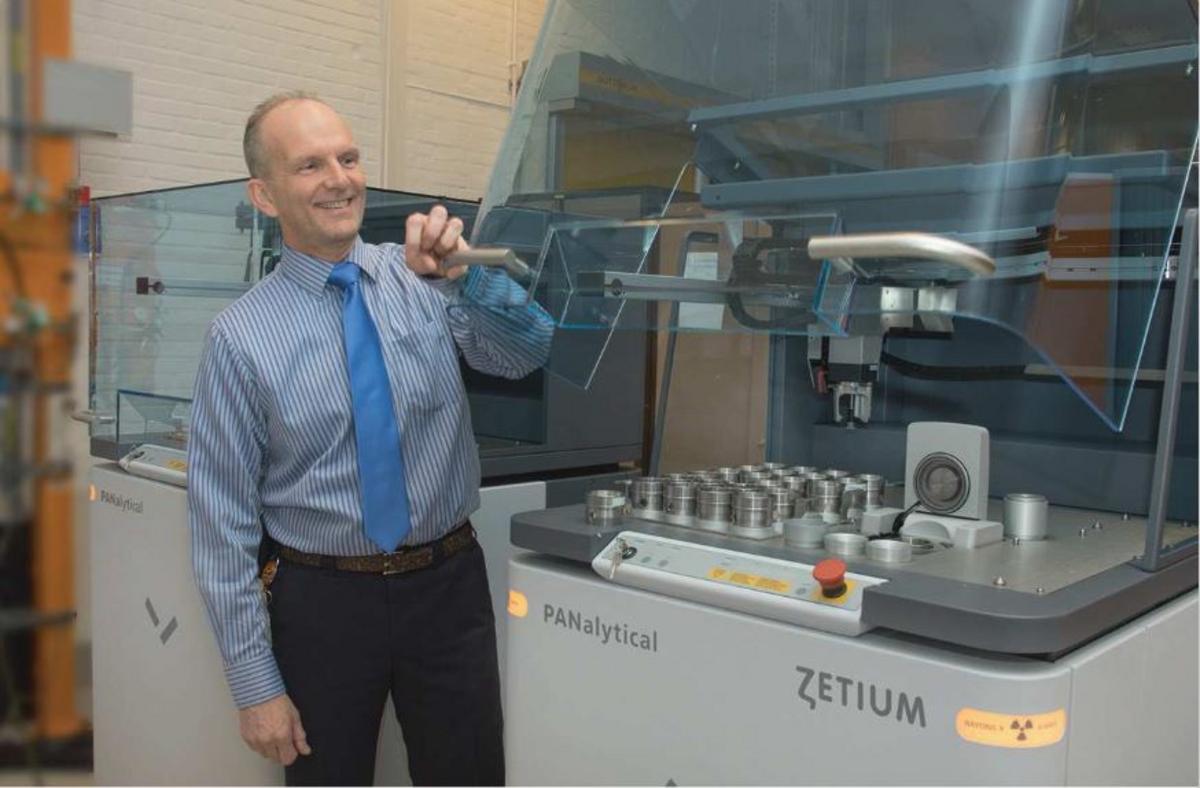Figure 1. Mineralogy of Nickel Laterites
Reflectance spectroscopy was applied as a sampling tool for deriving compositional data of nickel laterites in the Koniambo deposits of New Caledonia. The aim of the work was to test the feasibility of acquiring spectral reflectance data for retrieving quantitative compositional information on nickel laterites exposed in mine bench walls as a routine sampling method for ore-grade control in a mining operation. The spectral reflectance data record complex variations in mineralogical and chemical compositions of nickel laterites.
A key method tested in this work is a calibration procedure for converting spectral reflectance to weight percentage of chemical components. A partial least squares (PLS) analysis method was used for this purpose. The abundances of Ni, Fe, MgO, and SiO2, the four most important chemical components collectively determining the economical value and the metallurgical behaviors of lateritic nickel ores, were modeled by the spectral reflectance data of a set of reference samples. The models were then validated by an independent set of samples with known chemical compositions. The validated models were applied to spectral reflectance data acquired on mine bench walls to derive the chemical compositions of lateritic ores. The results have confirmed that the chemical compositions of nickel laterites can be modeled and predicted with confidence by use of spectral reflectance data.
Parameters used for modeling were selected based on the considerations of (1) simplicity of data processing, and (2) relationships between chemistry (Figure 2) and mineralogy Figure (1). Smoothed and background-removed spectral reflectance data of the 400 to 2,500 nm wavelengths were used for modeling Ni, Fe, MgO, and SiO2.

Unique Applications for Terraspec 4 Hi-Res:
- Mineral exploration
- Deposit mapping
- Mineral assemblage identification
- Drill cuttings analysis
- Core logging
- Determining geochemical gradients
- Clay species delineation
- Faster vectoring to ore body
ASD is a Malvern Panalytical Company. Recognized as the de facto technology for mineralogical analysis, the rugged portable ASD TerraSpec mineral spectrometers are trusted by top geologists for performing fast, precise pathfinder mineral identification for identification of exploration targets. The ASD TerraSpec 4 Hi-Res mineral analyzer brings new levels of efficacy to mineral exploration technology. This state-of-the-art mineral spectrometer offers enhanced performance in the SWIR 1 and 2 regions and a 6 nm resolution to help you determine the viability of mineral exploration targets faster and more precisely than ever before. These enhancements provide you with the ability to capture accurate spectral data more quickly, especially for samples with darker mineral features.
Conclusion: This work demonstrates that reflectance spectroscopy by using ASD Terraspec 4 Hi-Res provides an efficient and effective sampling tool for deriving high density compositional data of nickel laterites. An approach combining reflectance spectroscopy with conventional sampling techniques will result in significant improvement on ore-grade control sampling in terms of representation and precision of data and savings on cost for sampling.










